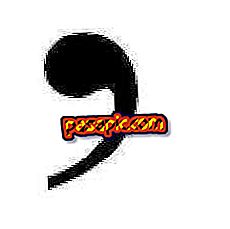Teaching the alphabet to children with special needs

Knowing the alphabet is a skill and basic prerequisite for all literacy instruction. Typically, children learn it through music, television and games aimed at pre-school children, as well as repetition and practice at home. Children with special needs may require a large amount of additional time and direct instruction using various methods, to acquire letter recognition.
You will need to:- Letter sheets
- Sandpaper
- Shaving cream
- Pencils
- Paper
- cards with alphabet
- Alphabet puzzle
- Early reading programs
- Books about the alphabet
one
Evaluate students' knowledge of letters. If the student communicates verbally, show letters with letters one by one and ask "What letter is this?". If the student does not communicate verbally, show a series of several letters, and ask the student to point to each letter while you name it.
two
Choose the first group of letters to teach the students. Many students are more motivated if the letters are from their given names, or even from a favorite television character. You can also choose to teach the letters according to their frequency in written Spanish, or in alphabetical order.
3
First, teach the cards, using a letter of the day. Tell the student: "This is letter B. Can you find another letter B?" Have the child match the letters in a memory game, or incorporate whole-body movements, placing large letters on the floor and having the students step on or jump to the letter that received their name. Use multiple modes of instruction, including visual, auditory, tactile and kinesthetic, to fully engage students with different learning abilities.
4
Ask the student to name the letters, once you can identify or point them out. Use cards or letter cards at the beginning. Teach the student to generalize the identification of letters in various contexts through the use of books about the alphabet and puzzles.
5
Provide frequent practice with letter identification by presenting letters throughout the day, and in multiple contexts, once you have been taught. Incorporate directed letters into many different activities in the classroom. Place letter tiles in a sandbox and ask the students to find the pieces in the sand and name them. Students can also practice drawing or tracing letters with their fingers in some shaving cream on the table, or in sandpaper. Students love to practice writing letters or using literacy games on computers.
6
Start teaching simple words as soon as the student has learned enough letters. Using this new skill in a functional spelling context will help maintain student interest. Students can practice tracking or writing words, or building with cards or letter cards.
Tips- Keep the learning materials simple and focus on identifying letters. Eliminate distracting stimuli, such as letter-card images.
- Teach the letters in uppercase and lowercase letters separately. Both are necessary for reading.
- Using early reading programs is a way to capture student interest and provide additional practice with letter identification.
- Students who learn at a slower pace may need a "letter of the week" instead of a "letter of the day".
- Students with special needs may be confused or distracted by the irrelevant features of teaching materials, such as background color or font. Choose the materials for their greater clarity and simplicity.


